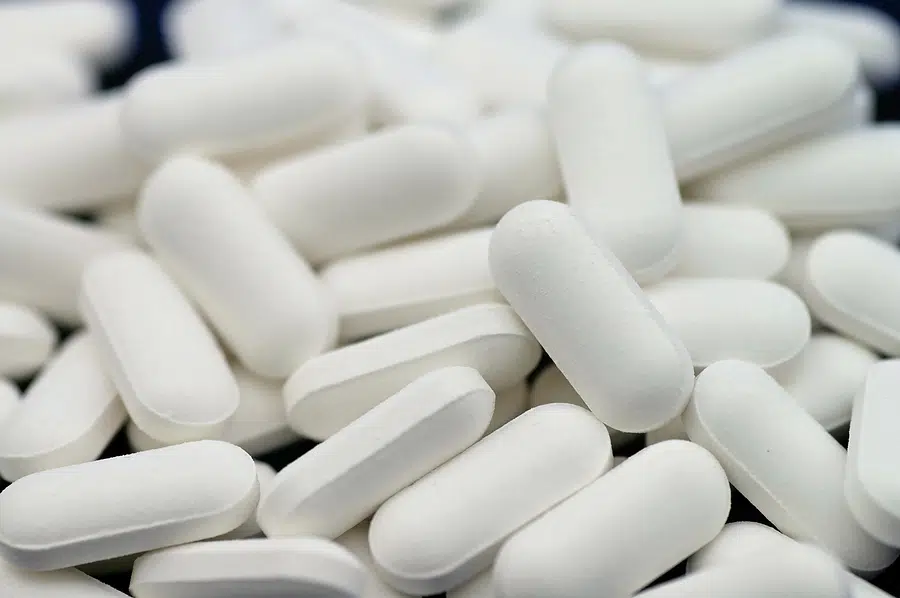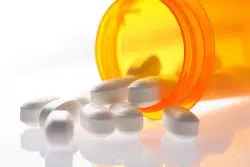Long-Term Addiction Treatment Maintenance

Last Updated: September 25, 2023
For some addicted patients who are preparing to break free from opiate dependence (e.g., heroin addiction or addiction to painkillers like OxyContin, Percocet, and others) or alcohol dependence, the choice to use a long-term maintenance medication to assist them through detox and treatment is an easy one.

Closeup of a pile of white pills ** Note: Shallow depth of field
For others, it’s not necessarily as clear whether or not long-term addiction maintenance is the right choice or if a short-term detox with no medication is a better option. A number of factors come into play when making that decision. If your loved one is preparing to begin detox and considering his options, medication maintenance should certainly be discussed with his medical provider.
Is long-term addiction treatment maintenance utilizing medication the right choice for your loved one?
Factors to Consider
Each patient is different, and the decision on how best to proceed in the debate between short-term, “cold turkey” detox with no medication and long-term maintenance that utilizes medications should be made on a case-by-case basis. Some factors that will impact this decision include:
- Drug of choice: Not every addictive drug has a slew of medication options that will aid in treatment. Alcohol and opiate drugs like heroin or painkillers are among those that do, but cocaine, for example, does not.
- Dose of that drug at the time of detox: For opiate drugs, there are a number of different medication options. For those living with a high dose addiction to heroin or painkillers, only methadone will be appropriate. Once patients taper down their dose to a lower dose or if they begin with a lower dose addiction, buprenorphine may be an option as well.
- Other drugs of abuse commonly used: More and more often, patients are entering treatment with a dual drug dependence, citing more than one drug of choice that they use daily or multiple times a day. This can make it more complicated to deal with the initial withdrawal symptoms and/or to determine which maintenance medication is appropriate and in what dose.
- The existence of underlying mental health or medical disorders: Drug addiction can significantly impact certain mental health disorders or symptoms; this may be a consideration in determining whether or not certain medications will work or if they will potentially exacerbate the situation. Similarly, if the patient is taking medications for a co-occurring medical or mental health disorder, there may be potential interactions to consider.
- Goals for recovery and treatment: Some people have no desire to be tethered to their addiction via ongoing medication maintenance for months or even years; they want to be done with it as quickly as possible and move on. Others are a little less ready to transition into a new life of sobriety and concerned about their potential for relapse; for them, the continued use of maintenance medication may help them to remain strong in their recovery when they otherwise would be unable to avoid relapse.
- Past experience in rehab and recovery: If multiple attempts to detox and break free from drug use have been unsuccessful and no maintenance medications were utilized, then it may be time to try the long-term medication option. Similarly, if certain medications have proven unhelpful in the past then trying a new medication or combination of medications may be the right choice this time around.
Early Opiate Withdrawal Symptoms
The initial phase of withdrawal symptoms usually begin within the first 12-30 hours after the last dose of the opiate drug and may include:
- Irritability
- Nervousness and paranoia
- Bone and muscle aches
- Tearing of the eyes
- Runny nose
- Yawning
- Inability to sleep
- Heavy sweating

Is Maintenance Medication the ‘Foundation of Recovery’?
According to a study published in the Journal of Addictive Diseases, utilizing medications like methadone is the “foundation of recovery” for patients addicted to opiate drugs and seeking recovery through treatment. The researchers explored the use of naltrexone, methadone, and buprenorphine – the three most commonly prescribed medications for maintenance during opiate detox – and found that the “results indicate that maintenance medication provides the best opportunity for patients to achieve recovery from opiate addiction.”
Additionally, the researchers’ review of the available data on use of these medications found that utilizing methadone or buprenorphine during treatment resulted in:
- Higher rates of patients staying in treatment
- Reduced rates of relapse during medication maintenance
- Decreased cravings
- Increased ability to build and maintain positive relationships
Though this does not guarantee the successful recovery of all who utilize the medications, it may indicate that certain patients will fare better in their ability to avoid relapse and a return to active addiction, giving themselves time to get established in sobriety if they take advantage of the benefits of these medications.
Later Opiate Withdrawal Symptoms
Withdrawal symptoms from heroin and/or painkillers steadily intensify until they peak and plateau, slowly fading over the following weeks. These symptoms may include:
- Stomach cramps and diarrhea
- Goose flesh (e.g., goosebumps)
- Enlarged pupils
- Nausea and vomiting
Opiate Medication Options
The three most commonly prescribed medications for the maintenance phase of opiate detox are:
- Methadone: The “gold standard” in medication maintenance for opiate addicts, this medication has been in use since the 1970s. There are a number of federal regulations that surround the use of this drug, which provides an inherent structure to its use – some patients find this helpful to their recovery while others find it difficult to maintain once they find a job and develop commitments. For example, the drug must be taken daily but it must be administered in liquid form during specific dosing hours at a certified clinic or rehabilitation program. Over time, patients can “earn” take-home doses, but it requires months of strict compliance with all rules in order to reach that level of independent recovery.
- Buprenorphine: Buprenorphine, sold under the brand names Subutex and Suboxone, is the most recent medication approved for the treatment of opiate addiction and the only drug that is FDA-approved for no other purpose. An option for those with low-dose opiate addictions, buprenorphine has fewer regulations than methadone – patients are allowed to take their prescription home from a physician certified to dispense the medication and take the sublingual lozenges as directed on their own without supervision. Some tout the drug as having antidepressant effects as well, and many appreciate the fact that no daily clinic visits are necessary.
- Naltrexone: Oral naltrexone has long been an option for opiate addiction treatment, but it was rarely prescribed for the purposes of long-term opiate maintenance after methadone use became standard because it seemed to be the least effective choice. The new injection version of the drug seems to have overcome a number of the problems seen with use of the oral version – like frequently missed doses by patients. Despite this, when compared to the outcome rates of buprenorphine, the medication still seems to work well for fewer patients in terms of helping them to remain strong in their sobriety for the long-term as compared to the other options available.
Alcohol Withdrawal Symptoms
Withdrawal symptoms from alcohol usually begin within eight hours after taking the last drink and peak within 24-72 hours; however, onset may be delayed for up to a few days in some patients. The most common alcohol withdrawal symptoms include:
- Irritability
- Shakiness and/or nervousness
- Anxiety
- Intense fatigue
- Depression
- Nightmares
- Extreme shifts in mood
- Inability to think clearly
Maintenance Medications for Alcohol Detox

There are more than 150 different medications that have been studied and/or used in the treatment of alcohol detox. In most cases, these medications are not an option unless the patient suffers from moderate to severe withdrawal symptoms, including delirium tremens – the most severe alcohol detox symptom caused by alcoholism. Most medications prescribed to treat alcohol withdrawal symptoms are used only for the short-term and in the clinical setting. Many are administered intravenously and only for as long as it takes to navigate through the most difficult symptoms. These may include anti-anxiety medications like diazepam or seizure medications used to cut back on the number or severity of seizures experienced if that is an issue for the patient.
In most cases, long-term maintenance medications used in the treatment of alcohol dependence are used to help the person avoid relapse. Some help the patient to experience fewer cravings, while others cause a negative physical response should he or she drink alcohol in any amount thus encouraging abstinence. The most commonly prescribed long-term maintenance medications for the treatment of alcohol abuse and addiction include:
- Disulfiram (brand name: Antabuse): This medication makes the person feel nauseous or vomit when he or she drinks alcohol.
- Naltrexone (brand name: ReVia, Vivitrol): This prescription limits the ability of the person to experience a high when drinking alcohol.
- Acamprosate (brand name, Campral): This drug has been shown to reduce the cravings that a former drinker experiences for alcohol after cessation of use.
- Topiramate (brand name: Topamax): This medicine has been shown to limit problems associated with alcohol during detox and treatment.
Symptoms of Delirium Tremens
The most severe form of alcohol withdrawal symptoms is called delirium tremens. Signs of this issue may include:
- Severe agitation
- Moderate to high fever
- Visual hallucinations
- Seizures
- Extreme confusion
The Alternative to Long-Term Addiction Maintenance Medications
Detox is an unavoidable first step in recovery for those who are physically dependent upon their drug of choice, but taking medication does not necessarily have to be a part of that experience if it is for some reason unacceptable or inappropriate. A “cold turkey” detox, or detox undertaken with medical supervision in case of complications but without the assistance of long-term medications, is another option. For many, this option is the preferred avenue for detox because it shortens the overall detox experience. Rather than taper down slowly over months or even years, the person can be free from physical dependence upon the drug of choice – and any addictive substance – within a few weeks.
Because withdrawal symptoms can be difficult to bear, in addition to the long-term maintenance medication options, there are medications approved for the treatment of withdrawal symptoms for the short-term that are non-addictive and used solely to ease the patient’s discomfort by addressing specific symptoms. For example, if the patient experiences insomnia during detox, he or she may be prescribed a non-addictive sleep aid. In some cases, especially if mental health symptoms like depression or anxiety are co-occurring issues, then psychiatric medications may be appropriate; these may serve to make the withdrawal symptoms associated with a cold turkey detox more bearable.
Medically Supervised Drug Detox
No matter what the drug of choice or whether or not medications of any kind are utilized, it is essential that all patients undergo detox at a professional detox center. The care and supervision of medical personnel can:

- Aid in initial mental and physical stabilization, if necessary
- Address medical complications immediately, if necessary
- Limit the risk of medical complications
- Limit the risk of relapse during detox
- Provide early psychological and/or therapeutic support
- Connect the patient with follow-up psychotherapeutic treatment after detox to help him or her maintain sobriety for the long-term
It’s important to note that while maintenance medications offer the benefit of helping the patient to more quickly begin the process of psychotherapeutic healing and transition into a functional and healthy life, it is not a quick-fix solution to the medical disorder of addiction. In order to experience long-term recovery and a life that is not plagued by chronic relapse and the risk of overdose, it is important to follow up detox with an intensive psychotherapy program that will help the patient to make the transition from active addiction to a life of balance and sobriety smoothly and safely.
Learn more about how we can help your loved one to begin the process of recovery after substance abuse and addiction today. Contact us at Central Florida Detox now. We are here to answer your questions about long-term addiction maintenance medications and help you to determine the best detox path for your loved one.

 Insurance
Insurance About Us
About Us Our Facility
Our Facility Admissions
Admissions Programs
Programs Medical Detox
Medical Detox Inpatient Rehab
Inpatient Rehab Aftercare & Recovery
Aftercare & Recovery